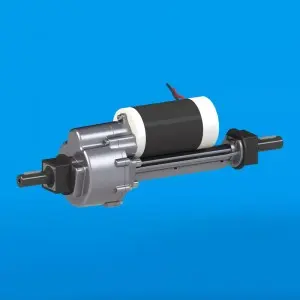Transaxles are an essential component of modern vehicles, especially those with automatic transmissions. Understanding how to downshift an automatic transaxle is crucial for maintaining control and optimizing performance while driving. In this article, we will explore the function of a transaxle, the process of downshifting in an automatic transaxle, and the benefits of mastering this skill.
What is a Transaxle?
A transaxle is a key component of a vehicle’s drivetrain, combining the functions of a transmission, differential, and axle into a single integrated unit. This design is commonly found in front-wheel drive and some rear-wheel drive vehicles, where the transaxle is located between the front wheels. In essence, the transaxle transfers power from the engine to the wheels, allowing the vehicle to move forward or backward.
The transaxle consists of several main parts, including the transmission, differential, and axle shafts. The transmission is responsible for changing the gear ratios to match the vehicle’s speed and load, while the differential allows the wheels to rotate at different speeds when turning. The axle shafts transmit power from the transaxle to the wheels, enabling the vehicle to move.
How to Downshift an Automatic Transaxle
Downshifting in an automatic transaxle involves shifting to a lower gear to increase engine braking and control the vehicle’s speed. This technique is particularly useful when descending steep hills, approaching a stop, or preparing for a quick acceleration. Here’s a step-by-step guide on how to downshift an automatic transaxle:
1. Understand the Gear Positions: Automatic transaxles typically have several gear positions, including Park (P), Reverse (R), Neutral (N), Drive (D), and sometimes additional lower gears such as 3, 2, and 1. Each gear position serves a specific purpose, with lower gears providing more engine braking and higher gears offering better fuel efficiency at higher speeds.
2. Anticipate the Need to Downshift: Before downshifting, it’s important to anticipate the need for a lower gear. This could be when approaching a steep downhill, slowing down for a turn, or preparing for a quick acceleration. By recognizing the need to downshift early, you can smoothly transition to a lower gear without sudden or jerky movements.
3. Gradually Reduce Speed: As you approach the situation that requires downshifting, gradually reduce your speed by easing off the accelerator pedal. This will help prepare the transaxle for the upcoming gear change and ensure a smoother transition.
4. Shift to a Lower Gear: Once you’ve reduced your speed, gently press the brake pedal to further slow down the vehicle. As you do this, shift the gear selector from Drive (D) to the appropriate lower gear, such as 3, 2, or 1, depending on the situation. Some vehicles may also have a dedicated “L” or “Low” gear position for maximum engine braking.
5. Monitor Engine RPM: After downshifting, monitor the engine speed (RPM) to ensure it stays within a safe range. Downshifting to a lower gear will cause the engine RPM to increase, providing more engine braking and control over the vehicle’s speed. However, it’s important to avoid over-revving the engine, which can cause damage.
6. Use Engine Braking: With the transaxle in a lower gear, you can use engine braking to slow down the vehicle without relying solely on the brakes. This can reduce wear on the brake pads and provide better control, especially when driving downhill or in slippery conditions.
7. Upshift as Needed: Once the situation that required downshifting has passed, you can smoothly transition back to a higher gear by gradually accelerating and shifting the gear selector back to Drive (D). This will allow the transaxle to optimize fuel efficiency and performance for normal driving conditions.
Benefits of Downshifting an Automatic Transaxle
Mastering the skill of downshifting in an automatic transaxle offers several benefits for drivers, including:
1. Improved Control: Downshifting provides additional engine braking, allowing drivers to better control their vehicle’s speed, especially when descending steep hills or navigating sharp turns.
2. Reduced Brake Wear: By using engine braking to slow down the vehicle, drivers can reduce the wear and tear on their brake pads, leading to longer brake life and lower maintenance costs.
3. Enhanced Performance: Downshifting to a lower gear can provide quicker acceleration when needed, such as merging onto highways or overtaking slower vehicles.
4. Increased Safety: The ability to downshift in an automatic transaxle can enhance safety by providing better control and responsiveness in various driving situations, ultimately reducing the risk of accidents.
In conclusion, understanding how to downshift an automatic transaxle is a valuable skill for any driver. By mastering this technique, drivers can optimize their vehicle’s performance, improve control, and enhance safety on the road. Whether navigating challenging terrain or preparing for sudden changes in traffic conditions, the ability to downshift effectively can make a significant difference in the driving experience. With practice and a clear understanding of the process, drivers can confidently utilize downshifting to maximize the capabilities of their automatic transaxle and enjoy a smoother, more controlled driving experience.
Post time: Mar-11-2024


